Related Research Articles

Wyoming is a state in the Mountain West subregion of the Western United States. It is bordered by Montana to the north and northwest, South Dakota and Nebraska to the east, Idaho to the west, Utah to the southwest, and Colorado to the south. With a population of 576,851 in the 2020 United States census, Wyoming is the least populous state despite being the 10th largest by area, with the second-lowest population density after Alaska. The state capital and most populous city is Cheyenne, which had an estimated population of 63,957 in 2018.
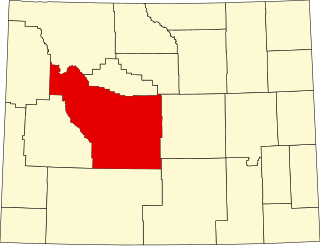
Fremont County is a county in the U.S. state of Wyoming. As of the 2020 United States Census, the population was 39,234, making it the fifth-most populous county in Wyoming. Its county seat is Lander. The county was founded in 1884 and is named for John C. Frémont, a general, explorer, and politician. It is roughly the size of the state of Vermont.

Lander is a city in Wyoming, United States, and the county seat of Fremont County. It is in central Wyoming, along the Middle Fork of the Popo Agie River, just south of the Wind River Indian Reservation. It is a tourism center with several nearby guest ranches. Its population was 7,487 at the 2010 census.
Larry J. Echo Hawk is an American attorney, legal scholar, and politician. A member of the Democratic Party, Echo Hawk served under U.S. President Barack Obama as the United States Assistant Secretary of the Interior for Indian Affairs from 2009 to 2012. He previously served as the Attorney General of Idaho from 1991 to 1995, the first Native American elected to the position, and spent two terms in the Idaho House of Representatives. In 2012, he was called as a general authority of the Church of Jesus Christ of Latter-day Saints. As of 2022, Echo Hawk is the last Democrat to have served as Attorney General of Idaho.
The Shoshone or Shoshoni are a Native American tribe with four large cultural/linguistic divisions:

Washakie was a prominent leader of the Shoshone people during the mid-19th century. He was first mentioned in 1840 in the written record of the American fur trapper, Osborne Russell. In 1851, at the urging of trapper Jim Bridger, Washakie led a band of Shoshones to the council meetings of the Treaty of Fort Laramie. Essentially from that time until his death, he was considered the head of the Eastern Shoshones by the representatives of the United States government. In 1979, he was inducted into the Hall of Great Westerners of the National Cowboy & Western Heritage Museum.

Joseph Medicine Crow was a Native American writer, historian and war chief of the Crow Nation. His writings on Native American history and reservation culture are considered seminal works, but he is best known for his writings and lectures concerning the Battle of the Little Bighorn of 1876.
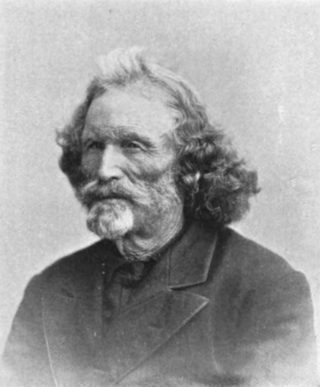
Jim Baker (1818–1898), known as "Honest Jim Baker", was a frontiersman, trapper, hunter, army scout, interpreter, and rancher. He was first a trapper and hunter. The decline of the fur trade in the early 1840s drove many trappers to quit, but Baker remained in the business until 1855. During that time he was a friend of Jim Bridger, Kit Carson and John C. Frémont. On August 21, 1841, he was among a group of twenty three trappers who were attacked by Arapaho, Cheyenne, and Sioux on what became known as Battle Mountain. After Henry Fraeb was killed, Baker organized the trappers against the Native Americans in a multiple-day fight.
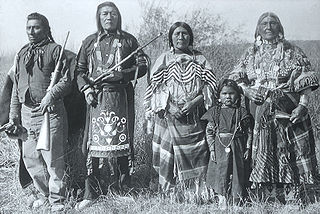
The Bannock tribe were originally Northern Paiute but are more culturally affiliated with the Northern Shoshone. They are in the Great Basin classification of Indigenous People. Their traditional lands include northern Nevada, southeastern Oregon, southern Idaho, and western Wyoming. Today they are enrolled in the federally recognized Shoshone-Bannock Tribes of the Fort Hall Reservation of Idaho, located on the Fort Hall Indian Reservation.

The Wind River Indian Reservation, in the west-central portion of the U.S. state of Wyoming, is shared by two Native American tribes, the Eastern Shoshone and the Northern Arapaho. Roughly 60 mi (97 km) east to west by 50 mi (80 km) north to south, the Indian reservation is located in the Wind River Basin, and includes portions of the Wind River Range, Owl Creek Mountains, and Absaroka Range.
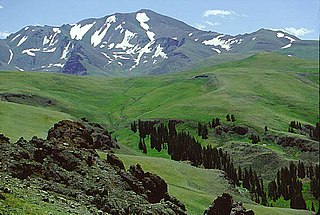
Shoshone National Forest is the first federally protected National Forest in the United States and covers nearly 2,500,000 acres (1,000,000 ha) in the state of Wyoming. Originally a part of the Yellowstone Timberland Reserve, the forest is managed by the United States Forest Service and was created by an act of Congress and signed into law by U.S. President Benjamin Harrison in 1891. Shoshone National Forest is one of the first nationally protected land areas anywhere. Native Americans have lived in the region for at least 10,000 years, and when the region was first explored by European adventurers, forestlands were occupied by several different tribes. Never heavily settled or exploited, the forest has retained most of its wildness. Shoshone National Forest is a part of the Greater Yellowstone Ecosystem, a nearly unbroken expanse of federally protected lands encompassing an estimated 20,000,000 acres (8,100,000 ha).
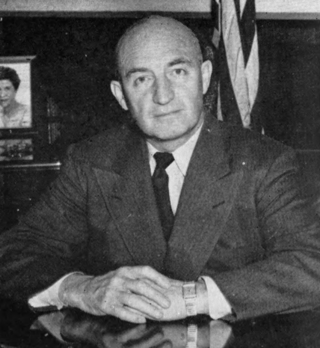
Milward Lee Simpson was an American politician who served as a U.S. Senator and as the 23rd Governor of Wyoming, the first born in the state. In 1985, he was inducted into the Hall of Great Westerners of the National Cowboy & Western Heritage Museum.

Sacagawea was a Lemhi Shoshone woman who, in her teens, helped the Lewis and Clark Expedition in achieving their chartered mission objectives by exploring the Louisiana Territory. Sacagawea traveled with the expedition thousands of miles from North Dakota to the Pacific Ocean, helping to establish cultural contacts with Native American people and contributing to the expedition's knowledge of natural history in different regions.

James Trosper is the current Eastern Shoshone Sun Dance chief. He is widely regarded as “a respected voice on traditional Plains Indian spirituality.” He is Director of the High Plains American Indian Research Institute. HPAIRI facilitates a wide variety of partnerships between the University of Wyoming and the tribes of the Wind River Indian Reservation in Fort Washakie, Wyoming “to work together in ways that empower tribes, nurture innovation for American Indian sustainability, and demonstrate respect for Native peoples’ cultures, traditions, laws, and diverse expressions of sovereignty.”
The Paiute-Shoshone Indians of the Lone Pine Community of the Lone Pine Reservation is a federally recognized tribe of Mono and Timbisha Native American Indians near Lone Pine in Inyo County, California. They are related to the Owens Valley Paiute.

Eastern Shoshone are Shoshone who primarily live in Wyoming and in the northeast corner of the Great Basin where Utah, Idaho and Wyoming meet and are in the Great Basin classification of Indigenous People. They lived in the Rocky Mountains during the 1805 Lewis and Clark Expedition and adopted Plains horse culture in contrast to Western Shoshone that maintained a Great Basin culture.

William Henry Harrison III was an American politician who served in the United States House of Representatives and in the state legislatures of Indiana and Wyoming.
Wind River Tribal College, or WRTC, is a tribally chartered college located in Fort Washakie, Wyoming. The campus is on the Wind River Indian Reservation in central Wyoming. WRTC serves residents of the Wind River Indian Reservation and surrounding communities. WRTC's enrollment consists of mostly Northern Arapaho and Eastern Shoshone students.

Sherman Coolidge, an Episcopal Church priest and educator, helped found and lead the Society of American Indians (1911–1923). That first national American Indian rights organization run by and for Native Americans pioneered twentieth-century Pan-Indianism, the philosophy and movement promoting unity among American Indians regardless of tribal affiliation.
LaNada War Jack, also known as LaNada Boyer and LaNada Means, is an American writer and activist. She was the first Native American student admitted to the University of California at Berkeley in 1968. She led the drive to create the Native American Student Organization and became its chair. As a leader of the Third World Strike at UC Berkeley in 1969, she was arrested but succeeded in obtaining approval for the first ethnic studies courses to be included in the university's curricula. A few months later, she became one of the organizers of the Occupation of Alcatraz in 1969. After the occupation, she completed her bachelor's degree at the University of California, Berkeley and went on to study law at Antioch School of Law in Washington, D.C. While in Washington, she participated in the takeover of the Bureau of Indian Affairs office in 1972.
References
- 1 2 Barron, Joan (February 15, 1981). "Indian legislator tries to aid his tribe". Casper Star-Tribune. p. B6. Retrieved September 11, 2022.

- 1 2 3 Dennis, Yvonne Wakim; Hirschfelder, Arlene; Molin, Paulette F. (25 October 2022). Indigenous Firsts: A History of Native American Achievements and Events. Visible Ink Press. ISBN 9781578598069 – via Google Books.
- 1 2 Kromkowski, John A. (September 11, 1993). Race and Ethnic Relations 93/94. Dushkin Publishing Group. ISBN 9781561342129 – via Google Books.
- ↑ McDonald, Laughlin (October 20, 2014). American Indians and the Fight for Equal Voting Rights. University of Oklahoma Press. ISBN 9780806186009 – via Google Books.
- ↑ Trenholm, Virginia Cole (September 11, 1991). "Wyoming Blue Book: without special title". Wyoming State Archives, Department of Commerce – via Google Books.
- ↑ "What's Your Why? Episode: Scotty Ratliff: Serving His Native Community, The Wind River Reservation". www.thinkwy.org.